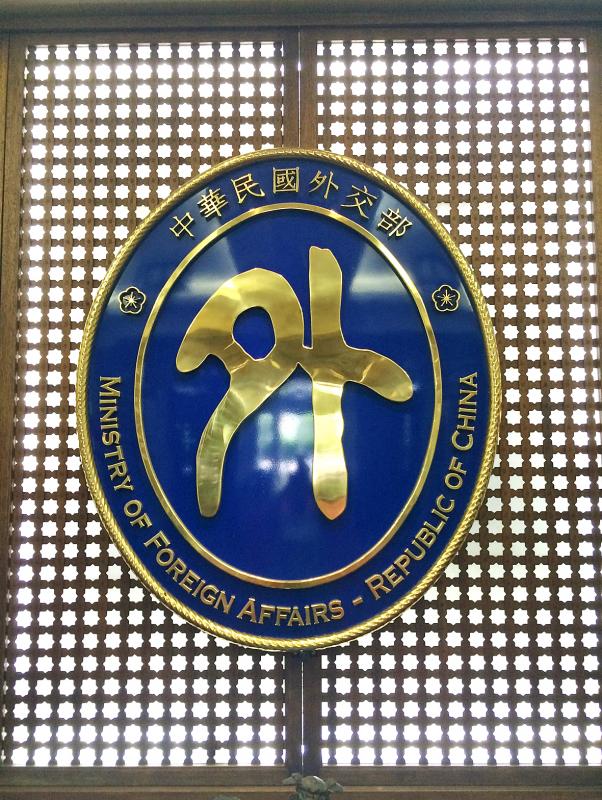Twenty-two international airlines have corrected the way they refer to Taiwan on their booking Web sites, the Ministry of Foreign Affairs has said in response to a written inquiry by Democratic Progressive Party Legislator Chiu Chih-wei (邱志偉).
Beijing in 2018 began requiring airlines that fly to Chinese airports to refer to Taiwan in their booking systems as “Taiwan, China” or “Taiwan Area.” Although there are still 39 airlines that refer to Taiwan in one of these two ways, 22 companies have corrected their systems to refer to the nation as “Taiwan,” Chiu said on Saturday, citing the ministry.
However, it would not reveal the carriers’ names out of concern that China might again pressure them into reversing course, the ministry said.

Photo: Lu Yi-hsuan, Taipei Times
In January 2018, China demanded that US hotel chain Marriott International Inc change its Web site and mobile app, which at the time listed Taiwan as a country, the ministry said, adding that a number of other companies also came under pressure afterward.
In April 2018, Beijing started to demand that international airlines add the word “China” after any reference to Taiwan in their systems, giving them 30 days to make the changes, which was later extended to July 25, the ministry said.
China threatened the airlines, saying that it would employ legal measures to “punish” them if they did not comply and would seek “administrative penalties” against them, it said.
Many major carriers, including Air Canada, British Airways PLC, Air France and Lufthansa AG, complied with China’s demands, but some maintained a flexible approach rather than outright compliance, it added.
The Civil Aviation Administration of China in July 2018 said in a press release that 44 international airlines had fully complied with Beijing’s demands on how they referred to Taiwan, Hong Kong and Macau, but that there were still four US airlines that had not implemented sufficient changes.
It would review the situation and decide whether to enact “civil aviation administrative procedures,” the agency said at the time.
There is an opportunity now to approach airlines about rectifying how they refer to Taiwan, as the worldwide aviation industry suffers from the COVID-19 pandemic and Taiwan has been successful in keeping the disease at bay, Chiu said.
Increasing praise and support for Taiwan, alongside growing antipathy toward China, have been evident in the US’ and European countries’ support for Taiwan’s participation in the WHO, he said.
The ministry should seek to take advantage of the current situation to counter Chinese pressure on Taiwan on the international stage, he said.
Taiwan’s flag carrier, China Airlines Ltd (中華航空), should take the lead on the issue by removing the word “China” from its name, he said.

The US government has signed defense cooperation agreements with Japan and the Philippines to boost the deterrence capabilities of countries in the first island chain, a report by the National Security Bureau (NSB) showed. The main countries on the first island chain include the two nations and Taiwan. The bureau is to present the report at a meeting of the legislature’s Foreign Affairs and National Defense Committee tomorrow. The US military has deployed Typhon missile systems to Japan’s Yamaguchi Prefecture and Zambales province in the Philippines during their joint military exercises. It has also installed NMESIS anti-ship systems in Japan’s Okinawa

‘WIN-WIN’: The Philippines, and central and eastern European countries are important potential drone cooperation partners, Minister of Foreign Affairs Lin Chia-lung said Minister of Foreign Affairs Lin Chia-lung (林佳龍) in an interview published yesterday confirmed that there are joint ventures between Taiwan and Poland in the drone industry. Lin made the remark in an exclusive interview with the Chinese-language Liberty Times (the Taipei Times’ sister paper). The government-backed Taiwan Excellence Drone International Business Opportunities Alliance and the Polish Chamber of Unmanned Systems on Wednesday last week signed a memorandum of understanding in Poland to develop a “non-China” supply chain for drones and work together on key technologies. Asked if Taiwan prioritized Poland among central and eastern European countries in drone collaboration, Lin

BACK TO WORK? Prosecutors said they are considering filing an appeal, while the Hsinchu City Government said it has applied for Ann Kao’s reinstatement as mayor The High Court yesterday found suspended Hsinchu mayor Ann Kao (高虹安) not guilty of embezzling assistant fees, reducing her sentence to six months in prison commutable to a fine from seven years and four months. The verdict acquitted Kao of the corruption charge, but found her guilty of causing a public official to commit document forgery. The High Prosecutors’ Office said it is reviewing the ruling and considering whether to file an appeal. The Taipei District Court in July last year sentenced Kao to seven years and four months in prison, along with a four-year deprivation of civil rights, for contravening the Anti-Corruption

NO CONFIDENCE MOTION? The premier said that being toppled by the legislature for defending the Constitution would be a democratic badge of honor for him Premier Cho Jung-tai (卓榮泰) yesterday announced that the Cabinet would not countersign the amendments to the local revenue-sharing law passed by the Legislative Yuan last month. Cho said the decision not to countersign the amendments to the Act Governing the Allocation of Government Revenues and Expenditures (財政收支劃分法) was made in accordance with the Constitution. “The decision aims to safeguard our Constitution,” he said. The Constitution stipulates the president shall, in accordance with law, promulgate laws and issue mandates with the countersignature of the head of the Executive Yuan, or with the countersignatures of both the head of the Executive Yuan and ministers or